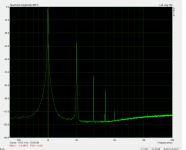Why do you measure OL? To find the phase/gain margin so you know if it is safe to close the loop, right? Therefor, you must measure the OL will all compensation and such in place, no?
Jan
Thanks Jan, that is also my opinion, I have to take a better look at that Idea of combining TPC with TMC, If it works is possible to have a 80db loop gain at 20Khz with 1MHz ULGF.
The tests I already made with spice looks promising.
The "group velocity" concept (as in wave propagation physics, the inverse of the "group delay" per unit length is the "group velocity") can be looked up as the second term in a Taylor series, under the assumption that the subsequent terms can be ignored. If they can't be, then the "group velocity" concept is meaningless, and so is the "group delay" concept.
This generalizes the approximations in #230 and #231. As well, if those approximations are not valid, then the "delay" is simply meaningless.
This generalizes the approximations in #230 and #231. As well, if those approximations are not valid, then the "delay" is simply meaningless.
Phase and GD. (10nF, 1kohm = 10us)
PMA, in your graph isn't group delay the slope of the phase curve - not really 'time delay', correct?
It is (delta phase)/(delta frequency).
Jan
In this photo we have an example of propagation delay, all comparators exhibit propagation delay and as we can also see the opamp starts to react immediately to the input signal it has no propagation delay, and is because of this that the feedback reacts immediately.
Attachments
Another example that time delay in power amplifiers is not important.
The first photo is the loop gain of the two topology the first is TMC that has a time delay of 266ns and second is TPC that has a time delay of only 0.6nS ( yes less than 1nS ) , the loop gain at 2Khz is the same on the two topologies.
The second image is the output voltage of the two Amplifiers when a current of 4A (p-p) is injected at the output.
As we can see the error is equal in the two amplifiers , although the TMC amplifier have much more delay than the TPC.
The first photo is the loop gain of the two topology the first is TMC that has a time delay of 266ns and second is TPC that has a time delay of only 0.6nS ( yes less than 1nS ) , the loop gain at 2Khz is the same on the two topologies.
The second image is the output voltage of the two Amplifiers when a current of 4A (p-p) is injected at the output.
As we can see the error is equal in the two amplifiers , although the TMC amplifier have much more delay than the TPC.
Attachments
Actually you showed that yourself, the plot where the current was included, even if the circuit was sluggish, the changes to the current was exactly in itme.
A typical VFA amplifier with differential input has an openloop response very similar to a first order filter and thus will the output from that be shifted app 90 degrees, but when the gain is made linear through feedback the phase is restored and there's no delay. We sacrifice the 1.order sloping loop gain in order to level match the (downscaled) output.
A typical VFA amplifier with differential input has an openloop response very similar to a first order filter and thus will the output from that be shifted app 90 degrees, but when the gain is made linear through feedback the phase is restored and there's no delay. We sacrifice the 1.order sloping loop gain in order to level match the (downscaled) output.
This is the Zoom of the crossover spikes at output of the TMC and TPC amplifier, we can see the delay between the output of the 2 amplifiers, but the error is near equal for both.
The crossover distortion is a good example as it is a more complex signal than a pure sin wave.
The crossover distortion is a good example as it is a more complex signal than a pure sin wave.
Attachments
Actually you showed that yourself, the plot where the current was included, even if the circuit was sluggish, the changes to the current was exactly in itme.
A typical VFA amplifier with differential input has an openloop response very similar to a first order filter and thus will the output from that be shifted app 90 degrees, but when the gain is made linear through feedback the phase is restored and there's no delay. We sacrifice the 1.order sloping loop gain in order to level match the (downscaled) output.
Michael at this time I am in the process of collecting more data, I have an image of how this works, but need to think a little more.
I think feedback works really well and there is nothing wrong with it, but people normally prefer the sound of a distorted source than a linear one.
I must say I never heard a tube amplifier that I liked, it gives me auditive fatigue.
But 2 moths ago I made some circuits to add distortion to the music signal, to see the effect of the distortion on the music perception. I made some with the harmonic decay like those of Valve amplifiers, but was not good to me.
Then I try a amplifier with only produces 2º Harmonic and if push too far a litle of 4ª, and I liked very much no fatigue at all, even that the distortion was over 1%, the sensation that I have is that with the 2H the quality of the higher frequencies improve, was easier to imagine the location of the musicians, the records sounds more natural especially live records.

Attachments
Last edited:
I don't think feedback is bad either. unless you don't have enough. But then that is not really the feedback to blame, more the fact that the circuit you wrap the feedback around is not good enough. Not enough loop-gain at all frequencies and not good enough phase margin.
The only (big) advantage of feedback is, that the amplifier gain and
its input and output impedance is controlled by two
stable resistors. The gain is therefore independent of temperature or of
non-ideal transistors.
There is NO difference in delay between amps with or without feedback.
Delay depends only on bandwidth (and damping) for minimal phase systems.
Note that phase shift is only another word for delay in the special case of sinus signals.
Each amplifier has delay, you can call it propagation delay or phase shift, but
in the end it is simple delay.
With simulations you get nowhere in this case, quite reverse you prove that you
have no understanding of this matter (no offense intended)!
its input and output impedance is controlled by two
stable resistors. The gain is therefore independent of temperature or of
non-ideal transistors.
There is NO difference in delay between amps with or without feedback.
Delay depends only on bandwidth (and damping) for minimal phase systems.
Note that phase shift is only another word for delay in the special case of sinus signals.
Each amplifier has delay, you can call it propagation delay or phase shift, but
in the end it is simple delay.
With simulations you get nowhere in this case, quite reverse you prove that you
have no understanding of this matter (no offense intended)!
Even so called non feedback circuits use feedback... Show me a circuit and I will point you to a number of places where feedback is used.
Propagation delay is different from Phase. Phase is a condition of what is spat out, Delay is when. So please dont confuse the two. Phase does influence the result of the feedback proces, but not as an influence in time, "just as an influence on how the signals are summed in the input differential. Feedback subtracts the excessive gain from the open loop gain. The vectorial sum of the excessive gain drops when there are phase differences.
Propagation delay is different from Phase. Phase is a condition of what is spat out, Delay is when. So please dont confuse the two. Phase does influence the result of the feedback proces, but not as an influence in time, "just as an influence on how the signals are summed in the input differential. Feedback subtracts the excessive gain from the open loop gain. The vectorial sum of the excessive gain drops when there are phase differences.
A simple common emitter amp does not have feedback, at least if you ignore parasitics.
Send a 10kHz sinus through an amp with 12.5us delay. The sinus at the output will have a phase shift of 45 degree. It is easy to calculate delay from phase shift and vice versa.
Feedback guys like to talk about phase shift and oscilloscope guys talk about delay.
Send a 10kHz sinus through an amp with 12.5us delay. The sinus at the output will have a phase shift of 45 degree. It is easy to calculate delay from phase shift and vice versa.
Feedback guys like to talk about phase shift and oscilloscope guys talk about delay.
Delay is a steady state oscilloscope thing.
Feedback is instantaneous. where input and output levels are adjusted to each other some 50 million, or more, times a second.
The feedback proces is very tolerant to phase shift, ideal is a 90 degrees open loop, but as long as the vectorial sum is subtraction it works.
When you deviate too much from the ideal phase, then the available loop gain for correction drops and you're left with more distortion. and if your phase shifts are too big then it does not work any more, subtraction becomes addition and you see only blue smoke.
An emitter follower has 100% feedback, please read.
Emitter Follower
Feedback is instantaneous. where input and output levels are adjusted to each other some 50 million, or more, times a second.
The feedback proces is very tolerant to phase shift, ideal is a 90 degrees open loop, but as long as the vectorial sum is subtraction it works.
When you deviate too much from the ideal phase, then the available loop gain for correction drops and you're left with more distortion. and if your phase shifts are too big then it does not work any more, subtraction becomes addition and you see only blue smoke.
An emitter follower has 100% feedback, please read.
Emitter Follower
I meant a common emitter amp (emitter simply grounded) - not an emitter follower.
But what has this "any amp has feedback" to do with my post anyway?
Obviously feedback is not instantaneous as the error signal must travel through the amp. Otherwise stability would be of no concern.
But what has this "any amp has feedback" to do with my post anyway?
Obviously feedback is not instantaneous as the error signal must travel through the amp. Otherwise stability would be of no concern.
No, but the proporgation delay an phase shift are two very different things.
Proporgation delay is primarily caused by a distance the signal has to travel. So the proporgation delay is very very low.
Phase shift is the condition the signal arrives (comes out) in. Like it came out immediately but was altered, Shifted some degrees. Those two things are different.
Proporgation delay is primarily caused by a distance the signal has to travel. So the proporgation delay is very very low.
Phase shift is the condition the signal arrives (comes out) in. Like it came out immediately but was altered, Shifted some degrees. Those two things are different.
Do you read my posts or are you trolling? Have i written "propagation delay" anywhere?
Ask yourself the question: What causes phase shift? Obviously it is a delay between input and output.
Ask yourself the question: What causes phase shift? Obviously it is a delay between input and output.
The only (big) advantage of feedback is, that the amplifier gain and
its input and output impedance is controlled by two
stable resistors. The gain is therefore independent of temperature or of
non-ideal transistors.
There is NO difference in delay between amps with or without feedback.
Delay depends only on bandwidth (and damping) for minimal phase systems.
Note that phase shift is only another word for delay in the special case of sinus signals.
Each amplifier has delay, you can call it propagation delay or phase shift, but
in the end it is simple delay.
With simulations you get nowhere in this case, quite reverse you prove that you
have no understanding of this matter (no offense intended)!
No offense taken, but I think that your understanding is even worse than mine 🙄
were I live we say " There is no worse blind man than the one who doesn't want to see ".
There is NO difference in delay between amps with or without feedback.
Delay depends only on bandwidth (and damping) for minimal phase systems.
Power Amplifiers with 2 pole compensation has less than 5nS of delay at audio frequency, and some less than 1nS, show me a amplifier without feedback that Has less delay than this.
Feedback also lowers delay.
What exactly is incorrect about my post? Can you disprove a single sentence?
I don't believe that you have ever measured any amplifier with 1 nanosecond of delay. What a ********.
If i may help you: Any RF amplifier with bandwidth greater than 1GHz has less than 1 ns of delay. And it does not depend on feedback, be it local or global.
Switch OFF your simulator and switch ON your brain: How can you distinguish if an amp in a black box has feedback or not? You are not allowed to open the black box.
I don't believe that you have ever measured any amplifier with 1 nanosecond of delay. What a ********.
If i may help you: Any RF amplifier with bandwidth greater than 1GHz has less than 1 ns of delay. And it does not depend on feedback, be it local or global.
Switch OFF your simulator and switch ON your brain: How can you distinguish if an amp in a black box has feedback or not? You are not allowed to open the black box.
- Status
- Not open for further replies.
- Home
- Amplifiers
- Solid State
- Feedback loop speed
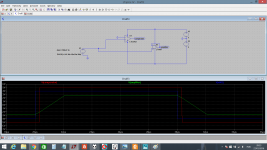
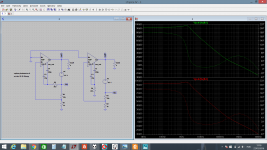
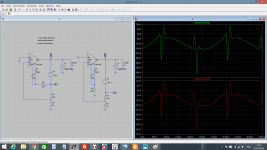
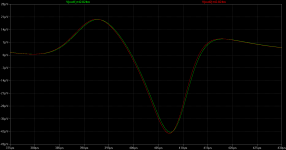
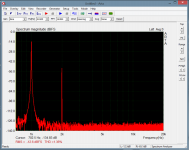
 I did not like this
I did not like this